Pond Bottom Drain Technology Yesterday & Today
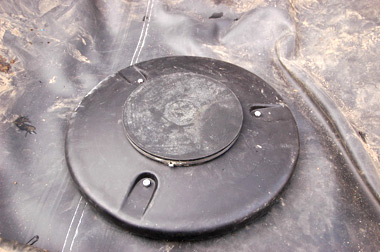
In the last five years Bottom Drain Technology for ponds has come a long, long way! Much of the educational material available for bottom drain installation is either swimming pool technology or dated “Koi Pond Technology”. That combined with some clever marketing by a water garden pond equipment manufacturer to discourage pond drain installations, it’s no wonder that bottom drains are still so sadly misunderstood by contractors and homeowners trying to figure them out. It’s only in the last five to seven years that gravity fed settlement units become commercially available as a proprietary product from a manufacturer. Why would you want a bottom drain for your pond? The simple reason is to REDUCE MAINTENANCE. Pond drains done right, remove organics from the pond and create a unique dynamic in the pond’s circulation system. Water Gardens/Eco-System ponds rely on beneficial bacteria colonies to breakdown fish waste, and other organics such as leaves, pine needles, pollens, dust and all other forms of water logged debris that typically settles to the bottom of a pond. Water Gardens/Eco-System ponds usually rely on a shallow bed of gravel on the bottom of the pond to help manage organics because it serves as a place for beneficial bacteria to colonize. (See Fig. 1) The gravel needs to be managed regularly to avoid undesirable conditions for beneficial bacteria colonies. As a rule, this requires draining the pond each spring in order to wash and clean the gravel bed. A dedicated Koi pond is completely opposite and traditionally will not have gravel in the pond. (See Fig. 2) Dedicated Koi ponds rely on a bottom drain (or drains), circulation jets, aeration and pond vacuums to keep the pond free of debris. Only within the last five years has a bottom drain been commercially available with an air diffuser built in to the unit to optimize efficiency of the bottom drain’s ability to capture solids. You can visit just about any Specialty Koi Dealer across America and witness the change in technology first hand! Any display pond at a Koi Specialty Facility that is older than 2003 will likely not have an aerated bottom drain! If you find a display pond at a Specialty Koi Dealers place five years or older WITH an aerated bottom drain, I would be very surprised and say you are at a facility that has helped pioneer aerated drains from the very beginning. Please spend money with them! They deserve your financial support! This is extremely exciting to our organization and it is only because of these advancements in Pond Bottom Drain Technology within the last few years that we even offer pond drain installations today. Our construction team has offered pond draininstallations since 2007 and have we made it a point to really begin educating and promoting bottom drains in our pond design consultations. It is our goal to help teach and promote the latest bottom drain technologies that we apply in our basic Koi pond designs each and every day; help you to determine what size bottom drain is best for your pond, show you how to determine optimal flow rates for your drains, & explain how proper use of aeration complements a pond drain’s ability to remove solids from the pond and explain the fundamentals we use for designing bottom drains into fish pond systems. |
Pond Drain Do’s & Don’ts
Eco-System Pond & Koi Pond Construction Details
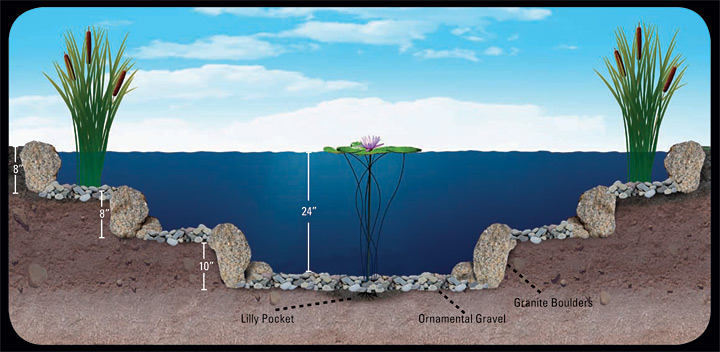 |
|
|
(Fig. 1) This is a typical construction detail on an eco-system pond or water garden with aquatic plant shelves and a thin layer of smooth ornamental gravel across the bottom of the pond. The ornamental gravel serves as a place for beneficial bacteria to colonize to help manage sludge and debris that typically settles to the bottom of a pond. Bottom drains can be installed into rock and gravel ponds too, with just a little extra work. |
|
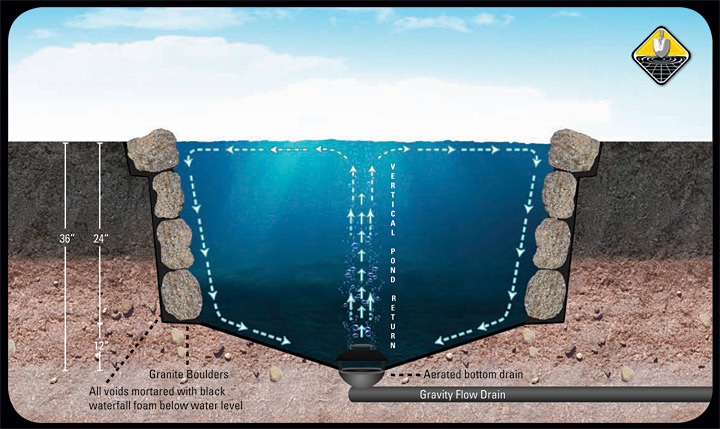
|
|
|
(Fig. 2) Here is an example of a cross section detail of a dedicated Koi pond. Typically, a dedicated Koi pond will have a deeper excavation and the bottom of the pond sloped towards a low point in the pond where a bottom drain would be strategically placed to capture heavy solids. Instead of using gravel to help manage the pond’s eco-system, koi ponds rely on technology with U.V. clarifiers, settlement tanks and large biological filters. |
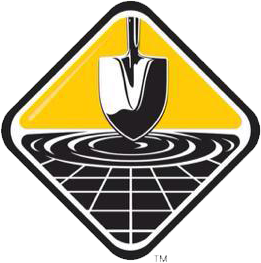

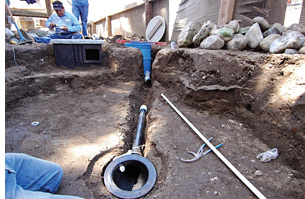 We only recommend Gravity Flow Bottom Drain Installations as opposed to direct suction drain installations. Gravity flow means we are plumbing the bottom drain to a pre-filtration unit and from the pre-filtration unit we are draining water with a
We only recommend Gravity Flow Bottom Drain Installations as opposed to direct suction drain installations. Gravity flow means we are plumbing the bottom drain to a pre-filtration unit and from the pre-filtration unit we are draining water with a 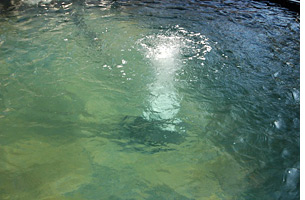 Now that we all accept gravity flow technology as the superior construction method over direct suction technology, we have speed limits we need to recognize. Most ponds will require 3″ or 4″ bottom drains so we will only cover these pipe sizes in this exercise.
Now that we all accept gravity flow technology as the superior construction method over direct suction technology, we have speed limits we need to recognize. Most ponds will require 3″ or 4″ bottom drains so we will only cover these pipe sizes in this exercise.